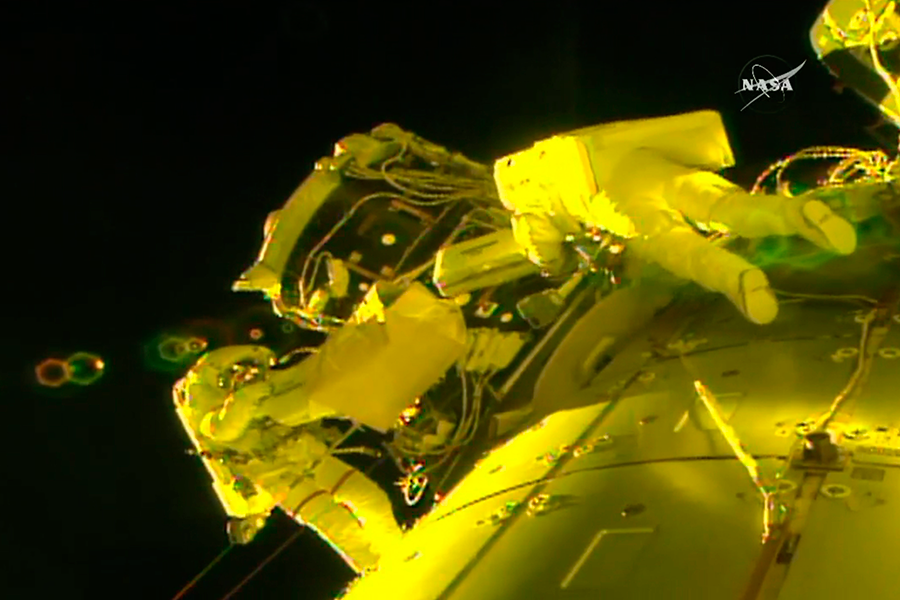Lost in space: Astronauts lose grip on key shield component
Loading...
It’s a familiar image from sci-fi movies: a vital tool tumbling end-over-end against the star-studded background, close in space but rendered irretrievable by orbital mechanics.
Such a scene played out in real life 250 miles above the Earth on Thursday when an important piece of cloth shielding for the International Space Station (ISS) drifted away from two spacewalking astronauts. Fortunately, NASA engineers on the ground were able to come up with a quick fix to keep astronauts, and the $100-billion orbiting research station, safe.
Peggy Whitson and Shane Kimbrough were engaged in some station modification when the mishap occurred, installing a docking point in a more accessible part of the ISS in preparation for commercial crew capsules being developed by SpaceX and Boeing. The new space taxis may begin flights as early as next year.
“During the spacewalk, which lasted just over seven hours, the two astronauts successfully reconnected cables and electrical connections on the Pressurized Mating Adapter-3,” NASA wrote in a press release.
The lost shielding weighs 18 pounds and measures 5 feet by 2 feet unfolded. Mission control tracked the white dot as it receded from view, and concluded that it posed no immediate threat to the space station. The 2-inch thick canvas will orbit the Earth (along with the 21,000 other pieces of space junk NASA currently tracks) before eventually burning up in the atmosphere.
After the accident, spacewalk support personnel leaped into action, devising and testing a makeshift solution that the astronauts could implement with materials on hand. After installing three shields as planned, Dr. Whitson and Mr. Kimbrough plugged the remaining hole with an unneeded cover they had just removed from the relocated docking port.
While not a perfect fit, it should protect the station from small asteroid and debris strikes.
"You guys came up with a fantastic plan – on short notice. That's amazing," Whitson radioed back to Mission Control, the Associated Press reports.
Objects get dropped remarkably rarely, considering that astronauts have spent a collective 1,243 hours and 42 minutes outside the station during 199 spacewalks. Ed White became the first space litterbug in 1965 when he let go of a glove during the very first space walk.
Other items to be lost in space include a spatula, and, perhaps most famously, a 30-pound tool bag full of tools in 2008, which amateur astronomers tracked for months before it met its fiery end.
The seven-hour operation was also notable for pushing Whitson into historic territory, overtaking Sunita Williams’s previous record for most time spent spacewalking by a woman: 50 hours and 40 minutes.
Whitson now holds the 5th spot in the spacewalk duration ranking, about 30 hours behind the all-time record holder: Russian cosmonaut Anatoly Solovyev with 82 hours spread over 16 spacewalks.
Ms. Williams may have a chance to retake her title, as she’s slated to return to the ISS next year aboard either SpaceX’s Dragon capsule or Boeing’s Starliner.
This report contains materials from the AP and Reuters.






